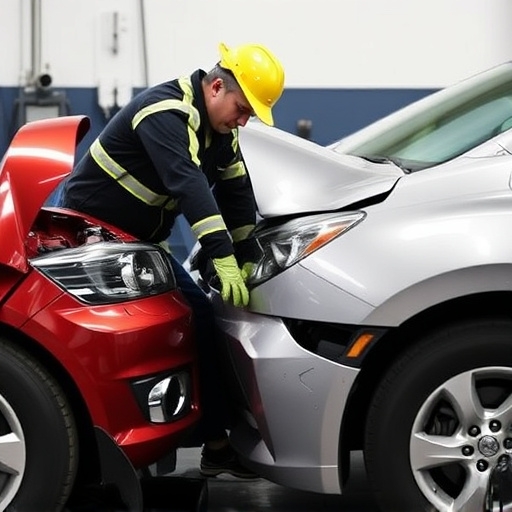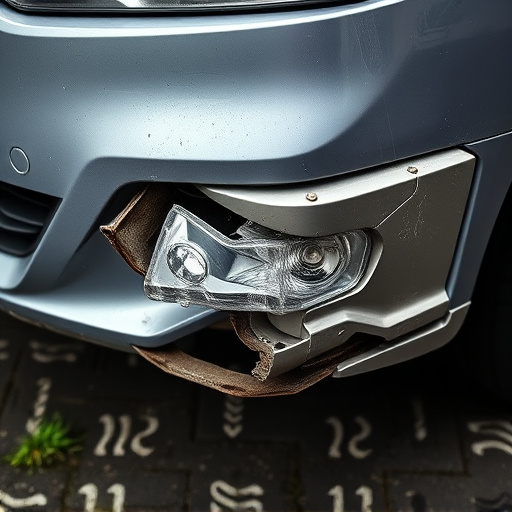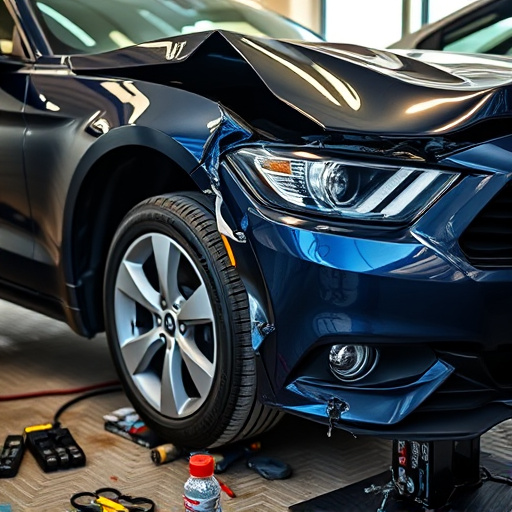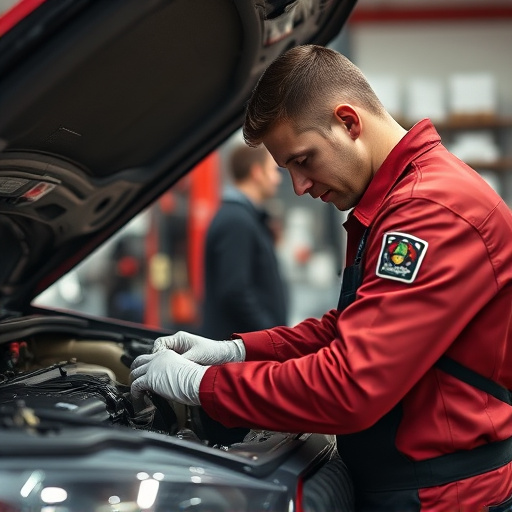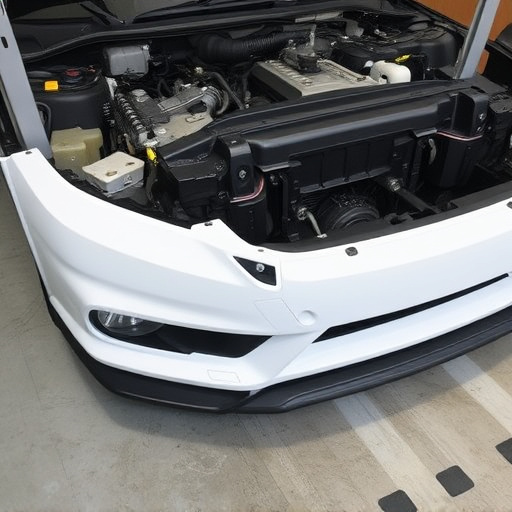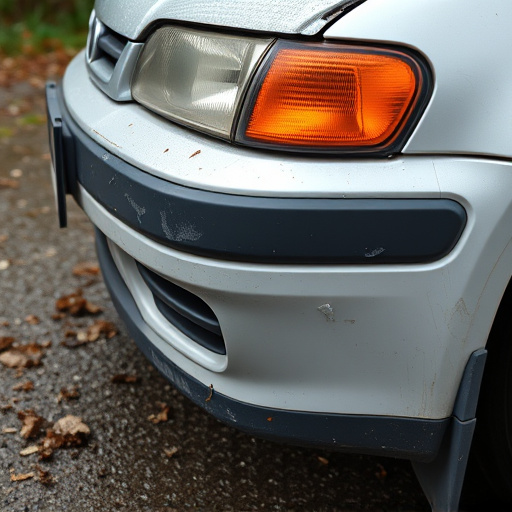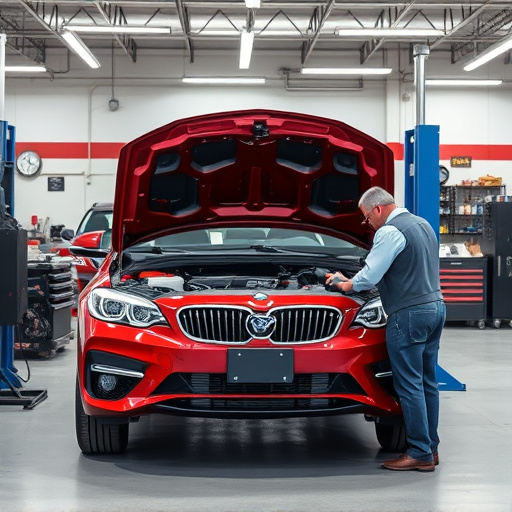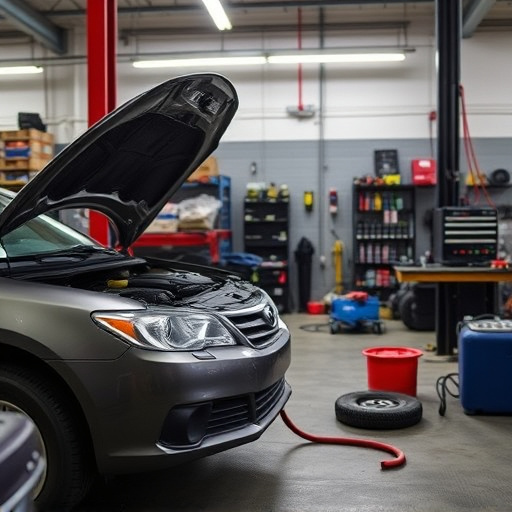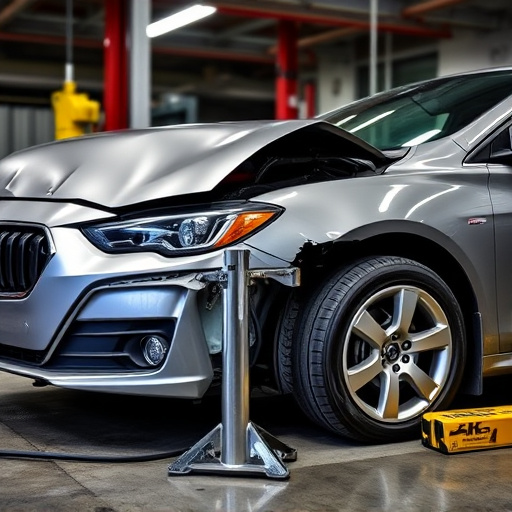Towing a vehicle to a collision center involves careful assessment of damage and compliance with environmental regulations. Specialized handling methods and equipment preserve structural integrity while strict safety protocols minimize risks during transport and repair processes, ensuring sustainable practices in auto salvage and adherence to waste management standards for hazardous materials.
In today’s digital era, understanding the intricate process of towing to collision centers is paramount for both auto salvage operators and regulators. This article delves into the essential aspects of towing procedures, exploring how efficient transportation contributes to swift collision center operations. We also scrutinize environmental regulations governing auto salvage and towing, emphasizing safety and compliance. By navigating these factors, folks can foster a sustainable and responsible automotive ecosystem.
- Understanding Towing Procedures to Collision Centers
- Environmental Regulations in Auto Salvage and Towing
- Ensuring Safety and Compliance in Collision Center Operations
Understanding Towing Procedures to Collision Centers
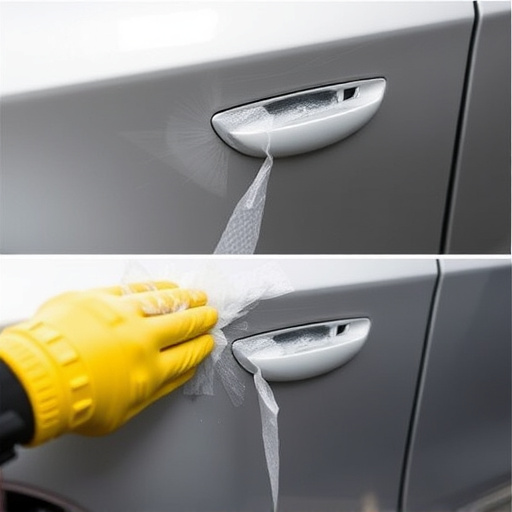
When a vehicle suffers damage, towing to a collision center is often the first step in the repair process. Understanding the proper procedures for this transport is crucial for ensuring both the safety of the vehicle and the efficiency of the subsequent auto body repair or bumper repair processes. The journey from the accident scene to the collision center requires specialized handling, especially if the damage is severe. Towing companies play a vital role in this initial step, utilizing appropriate equipment and techniques to securely transport vehicles without further compromising their structural integrity.
The process involves careful assessment of the vehicle’s condition to determine the best towing method—flatbed, wheel-lift, or other specialized carriers—based on the extent of damage, which could range from minor fender benders to significant frame shifts. Upon arrival at the collision center, vehicles undergo a thorough inspection to facilitate accurate estimates for car restoration and ensure all necessary equipment is in place for efficient auto body repair procedures.
Environmental Regulations in Auto Salvage and Towing
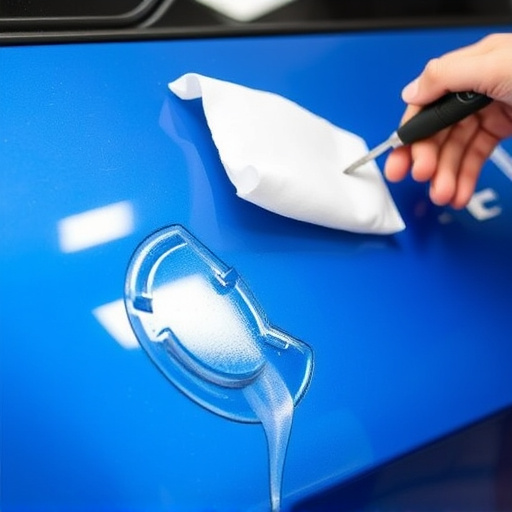
In the realm of auto salvage and towing, especially when vehicles are transported to collision centers, environmental regulations play a pivotal role in ensuring sustainable practices. These regulations are designed to mitigate the ecological impact of vehicle disposal and promote recycling initiatives. One key aspect is the proper handling and recycling of automotive fluids, such as engine oil and coolant, which can contain hazardous substances. Towing companies must adhere to strict guidelines for collection, treatment, and disposal to prevent these harmful materials from contaminating soil and water sources.
Additionally, the process of paintless dent repair and classic car restoration, often undertaken in collision centers, is subject to environmental oversight. The use of eco-friendly materials and techniques during these processes is encouraged, with a focus on minimizing waste generation. Moreover, regulations govern the disposal of vehicle components, ensuring that metals, plastics, and glass are recycled or repurposed responsibly. These measures contribute to a more sustainable approach within the auto industry, aligning with global efforts to reduce environmental footprints while promoting efficient resource utilization in automotive repair and restoration processes, including towing to collision centers.
Ensuring Safety and Compliance in Collision Center Operations

In the realm of collision center operations, ensuring safety and compliance is paramount to protect both employees and the environment. When a vehicle is towed to a collision center for repairs, strict protocols must be followed to mitigate risks. This includes proper handling techniques during towing to prevent further damage to the vehicle and ensuring that all equipment used in auto painting, frame straightening, and car bodywork services meets stringent safety standards.
Compliance with environmental regulations is equally critical. Collision centers generate various hazardous materials, such as paints, solvents, and metal shavings. Proper waste management practices, including the safe disposal of these substances, are essential to prevent pollution. By adhering to these guidelines, collision centers can maintain a safe working environment, deliver quality car bodywork services, and contribute to a sustainable future.
Towing to collision centers is a vital process that involves more than just moving vehicles. Understanding proper procedures, adhering to strict environmental regulations, and prioritizing safety are essential aspects of this operation. By implementing comprehensive guidelines and staying compliant with regulations, the auto salvage and towing industry can continue to play a crucial role in facilitating efficient vehicle repair and recycling while minimizing its environmental footprint.

